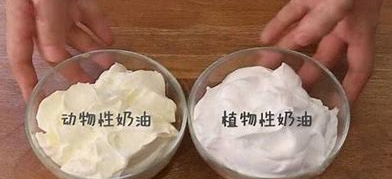
I don't know if you have ever eaten the coconut cream bun from Choi Dai Heung, but I can say it has been a part of my breakfast during my childhood. It used to cost two dollars and fifty cents, but now with rising prices, the two bakeries known as the "national bakery"—Choi Dai Heung and Crown Mario—sell Western-style bread at the most affordable prices. My favorite used to be the sausage bun, red bean bun, and this coconut cream bun. Each has its own charm; the sausage bun, as the name suggests, has a sausage in it. What more do you need when you have meat, right?
The red bean bun is based on the pineapple bun but with red bean filling added. The crispy outer layer contains red bean filling, making it very rich in texture. Buying it for just two dollars and fifty cents can fill your stomach; isn't that a great value? And then there's the coconut cream bun, a soft bread paired with silky smooth cream, making it feel like eating cake. It used to cost two dollars and fifty cents, but now it costs three dollars and fifty cents. The price has increased, but it still doesn't stop consumers from loving it. However, I don't want to eat it anymore, not because of Choi Dai Heung, but because I want to start paying attention to my health.
I wonder if anyone has experience in baking. Nowadays, many cakes, in addition to the basic flour, eggs, and milk, also add cream to enhance the overall texture of the cake. Therefore, the first choice must be animal cream. Animal cream is good, but it is a bit expensive, and not just a little expensive, but very expensive. A small bottle of light cream costs over thirty dollars. Domestic brands are a bit cheaper, but imported brands can be considered luxury items. For example, Anchor and Nestlé's cream costs over thirty dollars for two hundred and fifty milliliters.
In addition to selling bread, Choi Dai Heung also produces cakes, especially various kinds of cakes. Whenever it's my grandparents' birthday, my dad would buy a two-pound cake from Choi Dai Heung. The surface of the cake is also covered with smooth white cream. Choi Dai Heung is already the cheapest place to buy cakes, selling for only fifty to sixty dollars. Sometimes, if you buy one, you get half a cake for free. I believe many people have eaten Choi Dai Heung's bread or cake to some extent. Compared to the prices at Green Leaf Residence, Choi Dai Heung is truly the best.
With the cost of cream being so high, isn't the coconut cream bun a loss-making business? Of course, it's not that simple. Can't we find something else to replace animal cream? That's the main character I want to talk about today: plant cream. First, let me introduce what animal cream is and why it is so expensive. As the name suggests, animal cream comes from animals. It is said that about one or two hundred years ago, people would find a layer of cream forming on milk after it had been left to sit. Because it contains a lot of fat, it could be kneaded into the original cream.
In the past, milk production was not high, and the fat content was only around thirty percent. The limited production, combined with the processes required for extraction, caused the price of cream to rise sharply. In 19th century Europe, the production of cream was already in short supply. China's food safety standards stipulate that the fat content of light cream in dairy products should be between 10% and 80%. Depending on the fat content, it is divided into light cream and heavy cream. This means that cream is not made from fat extracted from animals but is obtained through the processing of milk.

So how is plant cream made? It is said that in the 19th century, when resources were scarce, Napoleon urgently needed something to replace animal cream, so he offered a large reward for anyone who could invent a substitute for cream. A Frenchman named Magi Moray invented margarine, also known as artificial butter. With advancements in technology, an American named Robert created cream using "hydrogenated soybean oil," which is also known as plant cream. So what is "hydrogenation"? Is this processed plant cream harmful or beneficial to the human body?

Plant oil is transformed into plant cream through hydrogenation under certain pressure and temperature. This process increases the hardness of the cream, improves its ability to maintain a solid shape, and extends its shelf life. In baking, it is easier to whip, and it doesn't collapse over time. However, plant oil that has not been fully hydrogenated can turn into trans fatty acids. Anything with "trans" in its name doesn't sound good, and indeed, trans fatty acids can raise cholesterol levels in the blood, significantly increasing the risk of cardiovascular diseases. There was even a case where a young man suffered a heart attack and died after consuming too much food containing trans fatty acids, such as fried chicken.
In addition to increasing the risk of diseases, it can also lead to symptoms like obesity. Besides plant cream, we also encounter many trans fatty acids in our daily lives, such as cocoa butter substitutes, non-dairy creamers used in milk tea, and the cream used by McDonald's, etc. Plant cream is not necessarily bad, but it should be consumed in moderation. Although only a portion of plant cream contains trans fatty acids, it's best to eat less of things that are not beneficial. If you eat a little here and a little there, you may end up consuming too much. Trans fatty acids are not easily metabolized by the human body, so it's best to eat less.
Animal cream has a lower melting point when whipped, so if not stored properly, it can easily collapse and look unappealing. In contrast, plant cream has a slightly higher melting point and is not as prone to melting. This is why many cake and bread shops are keen to use plant cream. However, with the increasing awareness of food safety, many people are slowly realizing the potential health issues caused by plant cream, so they start to be cautious about products containing plant cream. Conversely, some baking shops advertise "only animal cream" to sell their cakes.
Of course, production technology has matured significantly now, and the trans fatty acid content in some plant creams has become very low, meeting national food standards. However, compared to animal cream, plant cream is far inferior in terms of taste and texture. For example, it is often criticized for having a strong artificial flavor, lacking the natural milky aroma, and having a heavy oily taste. This is also why many tea brands, such as Cha Bai Dao, have launched fresh milk tea series, using milk instead of non-dairy creamers.
If you are struggling with obesity, take a look at whether you often eat these types of foods. If so, it's best to quit as soon as possible.
